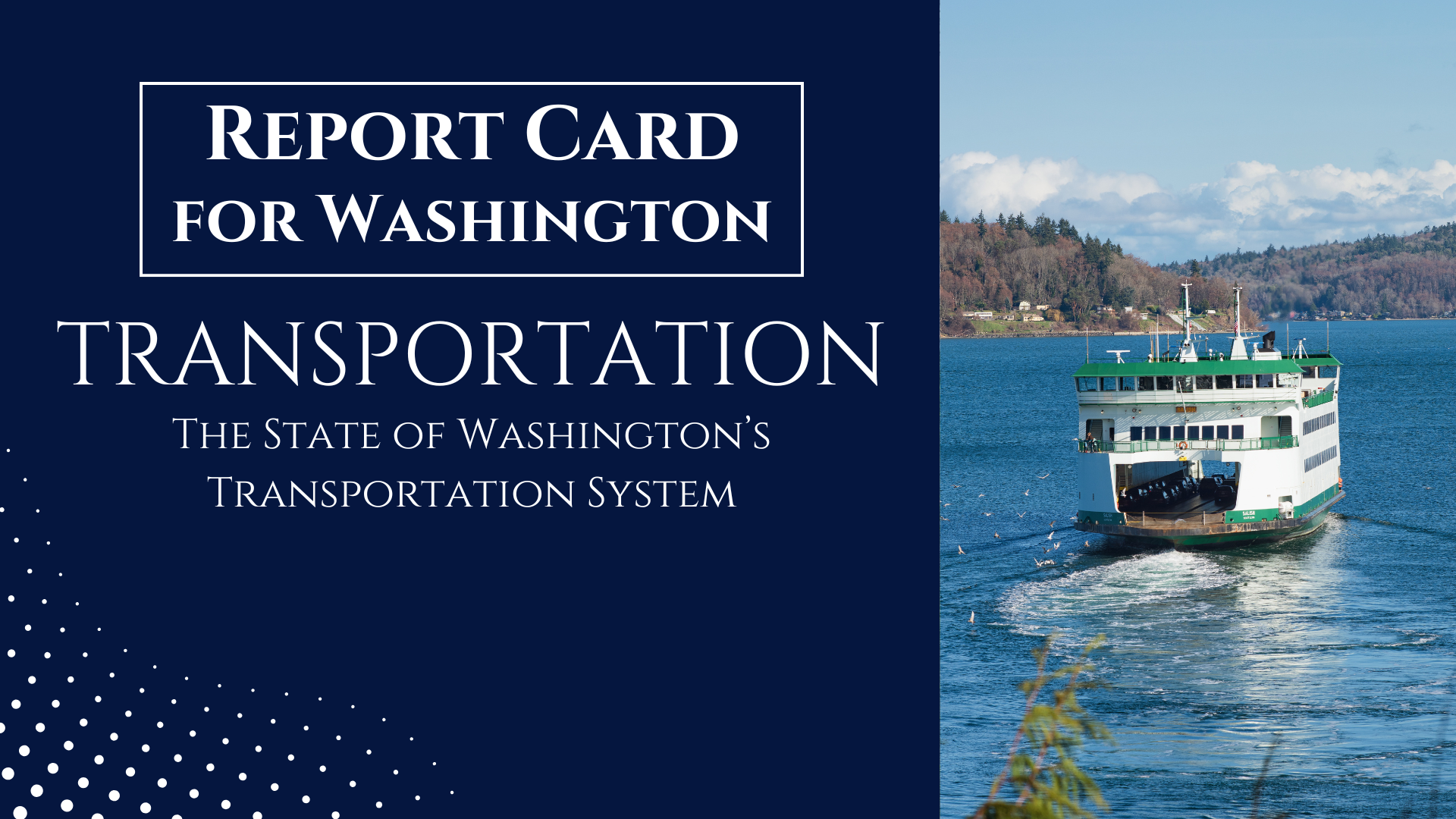Related Articles
The state Department of Commerce is very clear about its views on driving: officials must reduce or altogether eliminate people’s need to drive.
In their latest draft of the state energy strategy, Commerce officials outline ways they feel people and goods can be moved “more efficiently and equitably.” Until recently, mobility was generally defined as the efficient or predictable movement of people and goods. In Washington, this means reducing traffic congestion and improving freight mobility. However, there is now a push to infuse every aspect of policy with “equity” – an ambiguous term that sounds positive but seems to do little in practice for low-income and minority families. In transportation, “equity” is often used to secure funding for transit, walking/biking projects, and road diets that make traffic congestion, private mobility, and access to employment more difficult for the majority of working families.
Officials argue that vehicle emissions have disproportionate impacts on communities that live near highways, ports, rail, and other industrial areas. To reduce emissions, they argue, officials must reduce vehicle miles traveled (VMT), or how much people drive.
As a policy, VMT reduction has been around for a long time. In Washington, annual per capita VMT reduction targets were codified in statute in 2008, reducing annual per capita VMT by 18% by 2020, 30% by 2035, and 50% by 2050.
These goals are not realistic or meaningful, yet they can have harmful consequences as officials use them to justify land use and transportation policy decisions that can reduce mobility and quality of life. The state set a goal of reducing per capita VMT by 18% by 2020. Yet from the time this target was set through 2019, per capita VMT decreased by only 2.7%. The goal to reduce VMT by 30% by 2035 will not be met at this rate. It is unlikely that future VMT reduction goals will be met either.
VMT reduction targets were set to support state transportation policy goals, which include the goal of helping the environment and “enhancing healthy communities.” Since vehicles are increasingly fuel-efficient and clean, the state should consider eliminating VMT reduction as a goal rather than grasping for new reasons to keep it in place. Unfortunately, the draft energy strategy argues that VMT reduction is also necessary to address traffic congestion, reduce injuries and accidents, and eliminate local pollution. This effort highlights that VMT reduction, rather than being a means to an end, is now an end in itself.
The state believes transportation systems are more efficient if there are fewer people driving, which they actually argue would increase economic prosperity and growth. That claim is not supported by data.
There are studies that show no causal relationship between VMT and economic activity (gross domestic product). There are also studies that suggest increased VMT may promote economic activity and “decoupling” VMT from the economy to mitigate climate change is inefficient. Commerce officials do not offer evidence to support their claim that reducing driving would produce an increase in economic activity. That seems more like wishful thinking than a strategy backed by data.
Nonetheless, the state plows ahead with their plan to reduce VMT and “shift travel onto more efficient modes” – like public transit. The report cites King County as employing the “most effective and lowest-cost strategy.” Despite that assertion, King County officials (and specifically, Sound Transit) are notorious for spending astronomical amounts of public money on projects like light rail that yield low benefits. For example, benefits from the Sound Transit 3 light rail expansion are not projected to surpass costs until 2072 at the very earliest, and that was pre-COVID and the shift to telework. Again, Commerce touts their own wishful thinking as fact, revealing the strategy to be largely ideological.
Officials recommend that the state emulate King County’s strategy, focusing on compact development around transit, and “expanding transit services and making them more attractive, affordable, and easier to use.” Expanding transit use, the report says, is especially important post-pandemic to improve “transportation efficiency and equity.” They further speculate, without any data, that “inter-urban mass transit, like high-speed rail, could reduce the need for high-emitting air travel.”
The underlying assumption, as expressed by the Washington State Department of Transportation (WSDOT), is that increased transit use is equivalent to “VMT that was avoided.” They claim that “nearly 868 million vehicle miles were avoided in 2018 due to public transit use.” This is not a valid correlation, primarily because public transportation use and traffic congestion are unrelated. A statistical analysis of the 74 largest urbanized areas in the United States over a 26 year period found that “transit utilization does not lead to reduction in traffic congestion; nor does decreasing transit utilization lead to an increase in traffic congestion.” Even so, in 2018, Washingtonians drove 62.4 billion vehicle miles. That means, according to WSDOT’s logic, all of transit across Washington state only mitigated about 1.4% of actual VMT.
Pitching transit use as a way to reduce VMT in any meaningful way has repeatedly proven to be ineffective, despite billions spent on transit expansion. Continued claims that this is a useful strategy to reduce VMT are dishonest and a waste of public money.
The report adds that, like transit use, active transportation – walking and biking – is also way to “significantly reduce VMT of motorized vehicles.” Again, the report provides no evidence for this claim. Looking at census data for Portland (2012-2019), where active transportation has been promoted for years, both biking (-0.3%) and walking (and -0.4%) as a percentage of total workers, which is already incredibly low, have decreased. In Seattle, where biking and walking are an even smaller percentage of the population, biking decreased (-0.1%) and walking increased (+0.2%).

If officials want to decrease VMT “significantly,” promoting transit, biking and walking are certainly not the way to do it. Most people who choose to drive could not replace their car with walking and biking anyway, since they do not live close enough to their place of work (which is one reason they drive). If officials insist on reducing VMT, they should start by admitting that working from home, which was already increasing pre-COVID, is far more effective and helpful in reducing how much people drive. This would leave state transportation officials with what should be their primary focus: accommodating trips and maintaining the roads we pay for.






